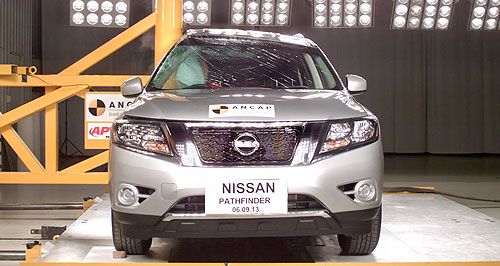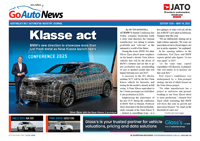News - Market Insight - Market Insight 2014Market Insight: ANCAP is an agent for changeSafety first: Closing down ANCAP will hurt the car industry because downgrading the safety message will weaken family buying of new or safer cars, says AAI. Car industry has generally not capitalised on sales potential of safer vehicles: AAI6 May 2014 By TERRY MARTIN THE Australian car industry has generally failed to capitalise on the potential of improved vehicle safety to lift sales across the market, according to specialist business and policy consultancy Australian Automotive Intelligence (AAI). AAI principal Richard Johns has told GoAuto that despite the industry coming to accept the role of the Australasian New Car Assessment Program (ANCAP), which in turn has led to the early adoption of safety equipment in many vehicles sold on the Australian market, the sales and marketing activities by car companies still tend to deflate safety features and ratings. “The ANCAP testing regime has clearly elevated the commitment of the automotive industry to raising the safety performance of new vehicles sold in Australia,” Mr Johns said. “Until 2008, less than half of the models tested achieved (the maximum) five-star safety ratings but only three of 40 models failed to meet the more stringent standards required for 2013. “However, company and model advertising seems to largely relegate safety factors to a dot point in a list of ‘features’ or a small ANCAP logo in the corner, and the general advertising emphasis largely continues to be on glamour and performance. “The industry must still think that safety does not sell – it seems an opportunity lost,” he said. Mr Johns’ comments come as Renault Australia – one of the first car companies to advocate the ANCAP regime and promote its five-star-rated models – has questioned the relevance of the local safety authority now that its forthcoming Captur crossover will be ineligible for a maximum rating because it does not have head-protecting airbags for rear occupants fitted standard. As GoAuto has reported, revised ANCAP criteria introduced on January 1, 2014, requires standard front and rear curtain airbags on all new passenger cars for them to be eligible for a top rating. The Captur does, however, qualify for five stars under the comparable, but slightly different, European NCAP testing. Federal industry minister Ian Macfarlane also recently questioned ANCAP’s relevance and the government is reportedly considering whether to continue its funding with the shutdown of Ford’s manufacturing operations in 2016 and Toyota and Holden’s factory closures a year later. Mr Johns said design requirements, whether Australian or those from other countries, only set the minimum standard required for vehicles while past ANCAP testing “clearly shows that there are distinct differences between vehicle safety performance and provision, even when all volume vehicles sold in Australia have been required to meet ADRs”. “If ANCAP does not continue then car buyers will lose a valuable input to their decision making,” he said. “The industry will also lose because downgrading the safety message will weaken family buying of new or safer cars.” In its recently released 2014 Yearbook, AAI has used ANCAP data to chart the safety rating of vehicles crash-tested in Australia according to the year of manufacture (since 2005), showing how the predominant rating has shifted from four stars – with a significant three-star group – to five stars in the most recent years of manufacture. The increase in number of five-star cars relative to lower rankings is the key here and, as AAI points out, has occurred at the same time that the standards required to achieve a rating has increased. This shows how car-makers have responded to the increasingly strict criteria set down by the safety authority, with many of them engineering their vehicles to meet future standards and ensure a maximum star rating. The obvious drawback is that vehicles which qualified for a maximum rating last year, for example, continue to benefit from a five-star status even though they might no longer meet the standard, leaving this year’s newer models that are arguably as safe or even safer – such as Renault with its Captur – with a sub-par four-star rating under the stricter new requirements. This is a sensitive issue for car-makers such as Renault who have emphasised safety in the marketing of their vehicles, and the French brand is now planning to highlight the Captur’s Euro NCAP rating instead. However, ANCAP supporters highlight that the tougher regime is a strong agent for ongoing safety improvements to new vehicles that are vital in not only keeping consumers better protected but also motivated to continue upgrading their vehicles for the latest advances in engineering and technology.  Read more1st of May 2014  Renault Australia questions ANCAP relevanceEuro NCAP score carries more heft than ANCAP, says Renault Australia chief9th of April 2014  Safety authority ANCAP in doubt post-2017: reportANCAP could face funding trouble if federal government comments come to fruition14th of February 2014  Mazda3 scores five-star safety ratingNew Mazda3 maintains maximum crash-test rating but ANCAP urges standard AEB |
Click to shareMarket Insight articlesResearch Market Insight Motor industry news |

















Facebook Twitter Instagram